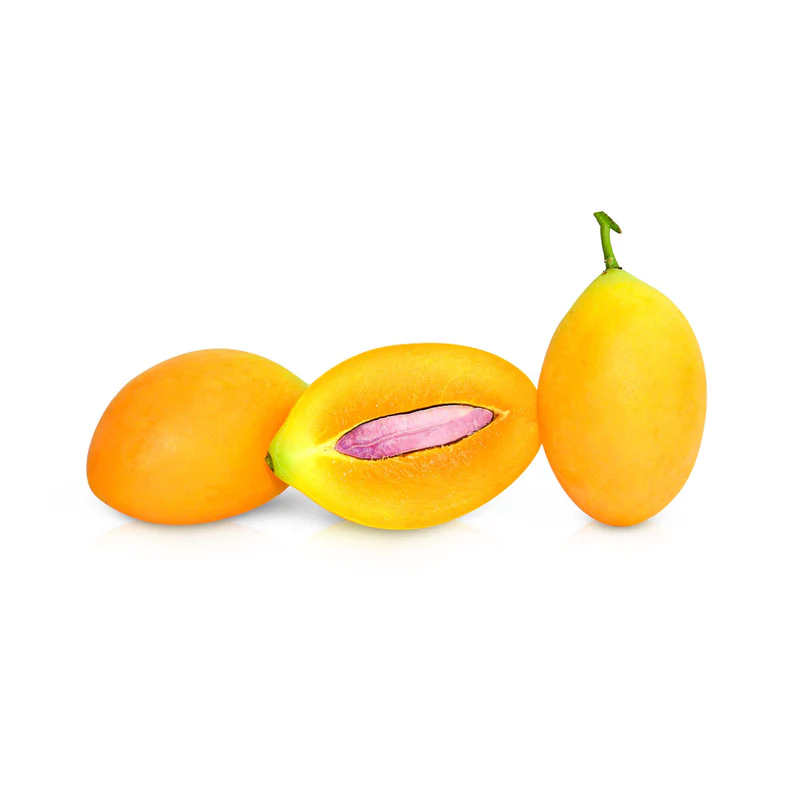
Jones Asked:
“Hey, I was visiting a friend in Southern Thailand and spotted a small fruiting tree in someone’s backyard. The fruits were about the size of plums, with soft golden flesh, so I assumed they were some kind of plum. But when I split one open, the pit inside was purplish — something I’ve never seen before. Anyone know what fruit this could be?”
Answer to: Yellow Fruit with Purple Inside
What you’ve come across seems to be the Marian plum, also known as plum mango or mayong-chid in Thai. Despite the name, it’s not actually a plum at all — it’s a close relative of the mango, native to Southeast Asia and now grown in places like Thailand, Malaysia, and Indonesia.
Marian plums (Bouea macrophylla) are about the same size as regular plums and ripen to a bright golden-yellow or orange. Their most distinctive feature is the pit, which often has a pinkish-purple hue — something unusual compared to regular plums. The flesh is soft, juicy, and ranges from sweet to tangy, with a flavor that reminds you of mango and peach. The skin is edible, slightly crunchy, and can be a bit tart, making this tropical fruit a unique and unmistakable find.
When they’re fully ripe, you can eat them fresh, just like you would a mango or peach — soft, juicy, and sweet-tart. If you get them unripe, don’t worry! They’re great in savory dishes, from tangy pickles to spicy sambals, or even in fruit salads like rojak. In Thailand, they’re a seasonal treat, mostly available from January to March, but they can be a bit pricey.
A Few Things to Note
- While the purple seed is technically edible, it’s often bitter and not usually eaten.
- The fruit has a tangy, mango-like aroma and can be used for juices, chutneys, and compotes in addition to being eaten fresh.
- The fruits ripen quickly and don’t stay on the tree for long once they’re ready.
In short: The mysterious little yellow fruit with purple inside you’ve described is almost certainly a Marian plum. Think of it as a tropical cousin of the mango with its own unique twist.
